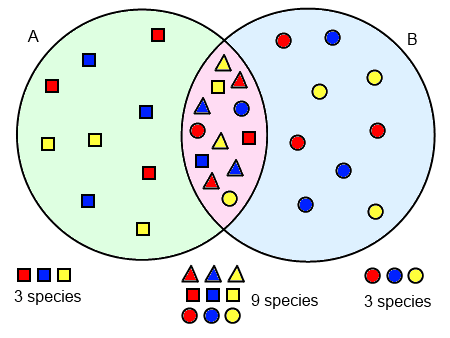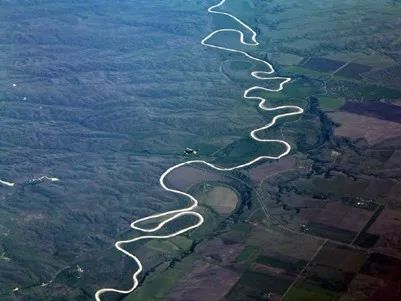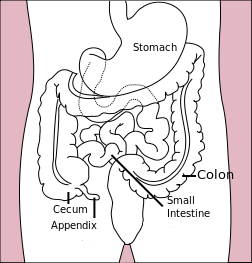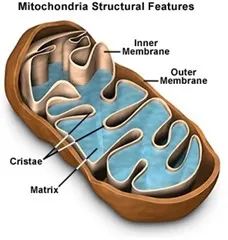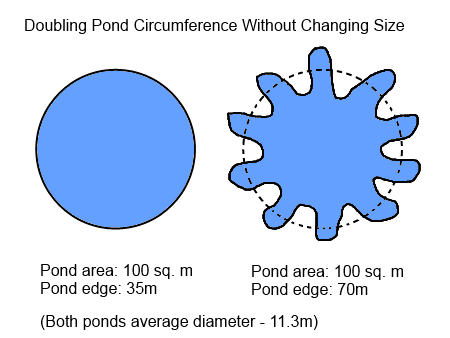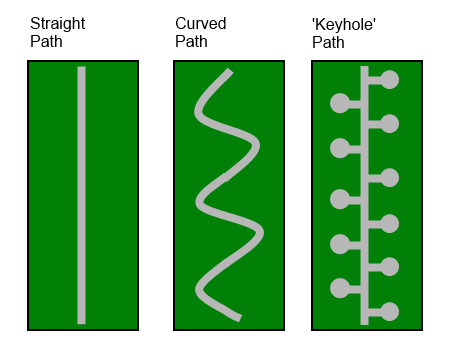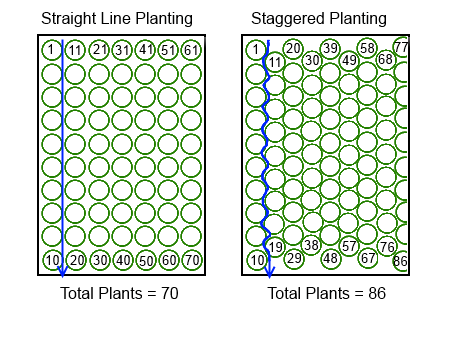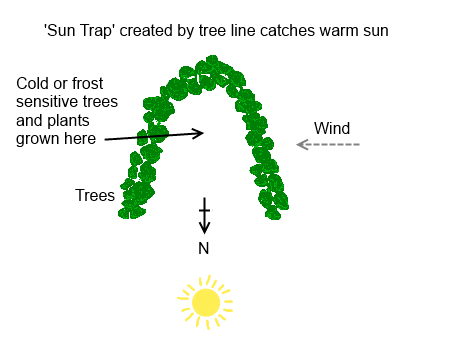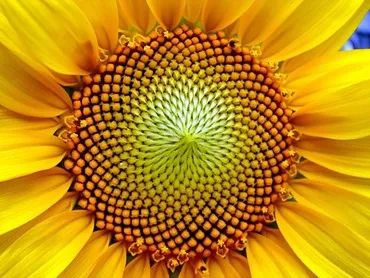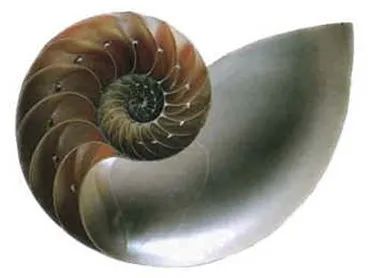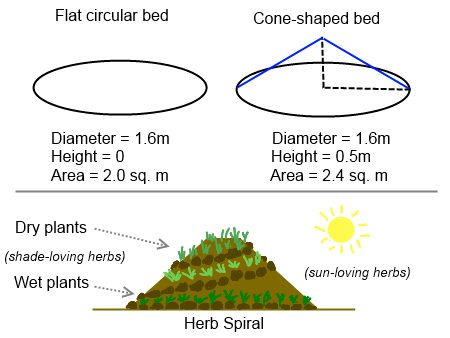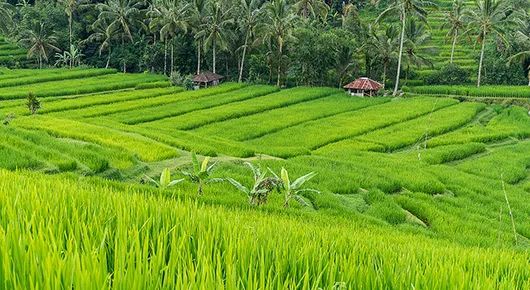
边缘是两种介质之间的界面。它或是水和空气交接的表面,或是与水相结合 的土壤微粒附近的区域,或是陆地和水体之间的海岸线,或是森林和草原之间的区 域。它可能是将草原区分开来的灌木丛,也可能是山坡上有霜带和无霜带之间的 区域,或沙漠的边界。当物种、气候、土壤、坡度,或者所有自然的或人为的状态在边界相遇时,就产生了边缘。—— 比尔·莫里森
10. Edge Effect
10. 边缘效应
The tenth Permaculture design principle is ‘Edge Effect’ – the use of edge and natural patterns for best effect.
第十个永续设计原则是“边缘效应”——使用边缘和自然图案达到最佳效果。
This design principle is concerned with increasing diversity and productivity in our systems by emulating the ecological phenomenon known as the “edge effect”, and the patterns found in Nature.
这个设计原则是通过模仿被称为“边缘效应”的生态现象,以及在自然界中发现的模式,来增加我们系统的多样性和生产力。
To understand this design principle, first we will explore the edge effect as it relates to Permaculture design, and then look at how we can incorporate the patterns of Nature into our designs to make our systems more efficient and productive.
为了理解这一设计原则,首先我们将探索边缘效应,因为它涉及到永久性设计,然后看看我们如何能够将自然的模式纳入我们的设计,使我们的系统更有效率和生产力。
Edge Effect
边缘效应
The edge effect is an ecological concept that describes how there is a greater diversity of life in the region where the edges two adjacent ecosystems overlap, such as land/water, or forest/grassland. At the edge of two overlapping ecosystems, you can find species from both of these ecosystems, as well as unique species that aren’t found in either ecosystem but are specially adapted to the conditions of the transition zone between the two edges.
边缘效应是一个生态学概念,它描述了在边缘两个相邻生态系统重叠的地区,如陆地 / 水域或森林 / 草原,生物的多样性是如何增加的。在两个重叠的生态系统的边缘,你可以找到来自这两个生态系统的物种,以及独特的物种,这些物种在两个生态系统中都没有发现,但是特别适应两个边缘之间的过渡带的条件。
For the sake of clarity, we must first define some key ecological terms.
为了清晰起见,我们必须首先定义一些关键的生态学术语。
An 一个edge 边缘 is the boundary or interface between two biological communities ( 是两个生物群落之间的边界或界面e.g. forest and grassland 例如森林和草原) or between different landscape elements ( )或不同景观元素之间(e.g. land and water 例如土地和水).
An 一个ecotone 群落交错带 is the transition zone along the edges of two adjacent ecological communities, where one ecological community meets the other ( 是沿着两个相邻生态群落边缘的过渡地带,一个生态群落与另一个生态群落相交(e.g. the area between forest and grassland 例如森林和草原之间的区域). The transition from one ecosystem to the other can be a very gradual or a very sharp one. )。从一个生态系统到另一个生态系统的转变可能是一个非常缓慢的过程,也可能是一个非常剧烈的过程
Edge environments occur naturally at many ecosystem boundaries, some examples of these are:
边缘环境自然地出现在许多生态系统的边界上,例如:
along the perimeter of bodies of water, such as river, lakes and streams 沿着水体的周边,例如河流、湖泊和溪流
where forests verge on rock outcrops, riparian areas (i.e. river banks), grasslands 那里的森林边缘岩石露头,河岸地区(即河岸) ,草原
along outcrops of exposed rock and cliffs 沿着裸露的岩石和悬崖露出地面
where forested areas border clearings 森林地带,边境空地
where sharp discontinuities in soil type or hydrology exist 在土壤类型或水文学中存在明显的不连续面的地方
where estuaries meet the ocean 河口与海洋交汇的地方
The following diagram illustrates how the edge effect operates:
下图说明了边缘效应是如何起作用的:
In this example, each ecosystem, labelled A and B, contain only three species, coloured red, blue and yellow.
在这个例子中,每个生态系统,标签 a 和 b,只包含三个物种,有色的红色,蓝色和黄色。
Ecosystem A contains 3 species represented by squares and ecosystem B has 3 represented by circles.
生态系统 a 由3个物种组成,以正方形表示,生态系统 b 由3个物种组成,以圆形表示。
In the region where they overlap, called the ecotone, there are red, blue and yellow squares and circles.
在它们重叠的地方,也就是“群落交错区” ,有红色、蓝色和黄色的方块和圆圈。
The combination of squares and circles (which represent six species) produce unique conditions which can now support three new species, represented as red, blue and yellow triangles.
正方形和圆形(代表六个物种)的组合产生了独特的条件,现在可以支持三个新物种,代表为红色,蓝色和黄色三角形。
So, while ecosystems A and B each contains three species, the overlapping transition zone contains nine.
因此,尽管生态系统 a 和 b 分别包含三个物种,重叠过渡带包含九个物种。
This increase of diversity that results from ecosystems overlapping is known as theedge effect.
这种生态系统重叠导致的多样性增加被称为边缘效应。
The ‘edge effect’ – Where two ecosystems overlap, the overlapping area supports species from both, plus another species that is only found in the overlapping area.
“边缘效应”——当两个生态系统重叠时,重叠区域支持两个生态系统的物种,加上另一个只在重叠区域发现的物种。
These ecotones (the regions where the edges of two ecosystems overlap), contain a greater diversity of species than either of the two separate ecosystems, and have significantly greater productivity, for the following reasons:
这些生态交错区(两个生态系统的边缘重叠的地区)的物种多样性比两个不同的生态系统中的任何一个都要大,生产力也大大提高,原因如下:
Resources from both ecosystems can be accessed in the one place. 两个生态系统的资源都可以在同一个地方获取
Conditions such as air temperature, humidity, soil moisture and light intensity levels all change at edges. 空气温度、湿度、土壤湿度和光照强度等条件都在边缘发生变化
Variations in the conditions at the edges can create favourable microclimates which can support unique species. 边缘条件的变化可以创造有利的小气候,可以支持独特的物种
Increased availability of light to plants along the edges allows more plants to be supported (greater diversity) and increases productivity. 边缘地带的植物获得更多的光照可以支持更多的植物(更大的多样性)并提高生产力
Increased plant diversity increases herbivorous insects, which increases birds, and ultimately predators. 植物多样性的增加增加了食草昆虫的数量,从而增加了鸟类的数量,最终增加了捕食者的数量
Ecosystem edges and borders act as ‘energy nets’ or sieve, capturing the massive movement of materials, nutrients and energy across their boundaries – leaves and soil are blown by the wind against barriers, shells wash up on the beach, etc. 生态系统的边缘和边界起着“能量网”或筛子的作用,捕捉物质、养分和能量在边界上的大规模移动——树叶和土壤被风吹到障碍物上,贝壳被冲到海滩上,等等
Adjacent ecosystems are connected via flows of energy, material (nutrients) and organisms across their boundaries, and these flows can exert strong influences on the fertility and productivity of ecosystems. 相邻的生态系统通过跨越其边界的能量、物质(营养物质)和生物体的流动连接在一起,这些流动可以对生态系统的肥力和生产力产生强大的影响
It is important to note that the environmental conditions at the edges of ecosystems usually different from those deep within the ecosystems themselves.
必须指出,生态系统边缘的环境条件通常不同于生态系统本身深处的环境条件。
The increased productivity and diversity resulting from the edge effect is clearly observable in Nature. Mangrove ecologies (land/sea interface) and reef ecologies (coral/ocean interface) are some the most highly productive natural systems. Riparian areas (the banks of rivers and streams) are very rich in biodiversity. Traditional human settlements are usually located at the highly productive transition zones between ecosystems, such as alongside rivers, estuaries or ocean, between foothills and plains, the outskirts of forest, or any combinations of these.
边缘效应导致的生产力和多样性的提高在自然界中是可以清楚地观察到的。红树林生态系统(陆地 / 海洋界面)和珊瑚礁生态系统(珊瑚 / 海洋界面)是生产力最高的自然系统。河岸地区(河流和溪流的岸边)生物多样性非常丰富。传统的人类住区通常位于生态系统之间的高生产力过渡地带,例如河流、河口或海洋,山麓和平原之间,森林边缘,或这些地带的任何组合。
In understanding edges, we need to keep in mind that they are the interfaces by which one ecosystem connects and interacts with another. Ecosystems themselves do not function in isolation, they are all interconnected in a web of life, like all things in Nature. The following extract expresses the idea clearly:
在理解边缘时,我们需要记住,它们是一个生态系统与另一个生态系统连接和相互作用的界面。生态系统本身并不是孤立运作的,它们都是在一张生命网中相互联系的,就像自然界中的所有事物一样。以下摘录清楚地表达了这一观点:
“…ecosystem ecologists recognized very early on that ecosystems are open to the flux of living and nonliving matter and organisms, and that ecosystem dynamics could not be understood unless ecosystems were treated as open systems subject to sometimes massive movement of materials across their boundaries. By tracking the exchange and storage of such “common currencies” as nitrogen and organic carbon among biotic and abiotic system components and their throughflow across system boundaries, ecosystem ecologists demonstrated how ecosystems functioned as highly interconnected networks.”
”生态系统生态学家很早就认识到,生态系统对生物和非生物物质及生物体的流动是开放的,除非将生态系统视为开放系统,有时物质会大规模地跨越其边界流动,否则就无法理解生态系统的动态。生态系统生态学家通过追踪生物和非生物系统组成部分之间氮和有机碳等”共同货币”的交换和储存情况及其跨系统边界的通流情况,展示了生态系统如何作为高度相互关联的网络运作
Using the Edge Effect in Design
在设计中运用边缘效应
As we have seen, edges serve as the interfaces of ecosystems, and these borders are much more productive and rich in life.
正如我们已经看到的,边缘作为生态系统的界面,这些边界更有生产力和丰富的生活。
What this means in terms of Permaculture design is that:
这意味着在永久性设计方面:
There is a greater number of mutually beneficial relationships between the elements at the edges. 在边缘的元素之间有更多的互利关系
Edges serve as ‘energy traps’ since they are the points where materials, nutrients and organisms flow across ecosystems, and there is increased cycling of materials and nutrients at the edges. 边缘作为能量陷阱,因为它们是物质、营养物质和生物体在生态系统中流动的点,边缘处物质和营养物质的循环增加
Edges create beneficial microclimates. 边缘创造有益的小气候
The edges of ecosystems are very important in supporting biodiversity and in the production of biomass. 生态系统的边缘在支持生物多样性和生产生物量方面非常重要
We can take advantage of the natural phenomenon of the ‘edge effect’ to increase the productivity and yields of the systems we design. We bring this about by increasing the available edge in our designs.
我们可以利用“边缘效应”的自然现象来提高我们设计的系统的生产率和产量。我们通过增加我们设计中的可用优势来实现这一点。
The way we increase edge is by looking to the patterns of Nature and emulating these patterns in our designs.
我们增加边缘的方式是通过观察自然的模式,并在我们的设计中模仿这些模式。
Nature has evolved to be as efficient as possible over hundreds of millions of years, and we curiously find that in Nature’s designs there are no straight lines in Nature, but a variety of patterns which we see repeated throughout.
经过数亿年的进化,自然界已经变得越来越有效率,我们奇怪地发现,在自然界的设计中并没有直线,而是有各种各样的模式,我们看到这些模式不断重复。
So, let’s have a look at Nature’s patterns that allow us to arrange elements more efficiently!
所以,让我们来看看大自然的模式,让我们更有效地安排元素!
Patterns
模式
When we look to Nature, we find similar patterns repeated through all forms of life. These patterns are there not for aesthetic reasons, not just for looks, but because of the efficiencies they provide.
当我们观察大自然时,我们发现类似的模式在所有生命形式中重复出现。这些图案的存在不仅仅是为了美观,不仅仅是为了外观,而是因为它们所提供的效率。
Nature has perfected packing as much as possible into small spaces and optimizing the organization of things. In many natural systems, the surface areas that serve as interfaces to the surroundings are maximised by increasing edge through patterns.
大自然已经尽可能完美地把东西塞进狭小的空间,并优化事物的组织。在许多自然系统中,作为周围环境界面的表面区域通过增加边缘通过模式得到最大化。
Lobular or Crenellated Patterns小叶或锯齿状花纹
A lobular (having small lobes) or crenellated (having square indentations) edge provides more edge than a straight line.
小叶(有小叶)或锯齿状(有方形缺口)边缘比直线提供更多的边缘。
Rivers run winding courses through the landscape, which increases the water penetration into the land and creates a greater area riparian ecosystem than if they were running in a straight line.
河流蜿蜒穿过景观,这增加了水渗透到土地,创造了一个更大面积的河岸生态系统,如果他们是在一条直线上运行。
Aerial photo of the Mississippi-River
密西西比河航拍照片
Similarly, the macrocosm pattern are reflected in the microcosm, our own intestines wind the same way to maximise the length, and therefore surface area, to absorb nutrients from the food we digest.
同样,宏观世界的模式也反映在微观世界中,我们的肠道以同样的方式缠绕,以最大化长度,因此表面积,从我们消化的食物中吸收营养。
Human intestines show same wavy (crenellated) pattern
人体肠道显示相同的波浪(锯齿状)图案
We can still go further into the microcosm and find the same patterns. If we look inside the cells of living organisms, we find small structures called Mitochondria – oblong shaped organelles that are found in every eukaryotic (non-bacterial) cell. In the animal cell, they are the main power generators, converting oxygen and nutrients into energy. This process is called aerobic respiration and is the reason animals breathe oxygen.
我们还可以进一步深入这个微观世界,找到相同的模式。如果我们观察活的生物体的细胞内部,我们会发现在每个真核细胞(非细菌)中都存在一种叫做线粒体长方形细胞器的小结构。在动物细胞中,它们是主要的发电机,将氧气和营养物质转化为能量。这个过程被称为有氧呼吸,是动物呼吸氧气的原因。
Mitochondria, the ‘power generators’ inside living cells, showing wavy pattern in their inner structure
线粒体是活细胞内的“发电机” ,其内部结构呈波浪状
We can replicate this pattern in our designs to maximize the available edge. If we are building a pond for example, without changing the size of the pond, we can double the length of the edge (the earth/water interface), and therefore squeeze in twice as much productive plants around it. In the example below the mathematical calculations show how for a pond based on n 11.3m circle, we create 100 square metres for water surface, and by changing the edge from a straight one to a wavy, we can double the effective circumference.
我们可以在我们的设计中复制这种模式,以最大限度地提高可用的优势。例如,如果我们正在建造一个池塘,在不改变池塘大小的情况下,我们可以将池塘边缘(土 / 水界面)的长度增加一倍,因此可以在池塘周围种植两倍多产的植物。在下面的例子中,数学计算显示了如何为一个基于 n 11.3 m 圆的池塘,我们创建了100平方米的水面,通过改变边缘从直线到波浪,我们可以双倍的有效周长。
We can use the same principle in garden bed design. A wavy path through a garden gives us more edge to plant along, and more space to access the garden. We can increase the accessible space and edges in a garden using ‘keyhole beds’. A keyhole bed allows greater access into the garden beds without having to step into the soil, this preventing soil compaction, which hinders plant growth.
我们可以在花园的花坛设计中使用同样的原则。波浪形的小径穿过花园,让我们有更多的边缘可以种植,也有更多的空间可以进入花园。我们可以使用钥匙孔床来增加花园的可接近空间和边缘。钥匙孔床可以让更多的人进入花园,而不必踏入土壤,这样可以防止土壤紧实,阻碍植物生长。
The same concept can be applied at the next level down from garden beds, to the actual planting layout within the beds, to optimise the use of space and therefore increase yields.
同样的概念可以应用在下一层,从花园床,到实际种植布局的床,以优化空间的使用,因此增加产量。
The circles indicate the space allocated for each plant, so the plants remain the same distance apart in both cases. If a circle is 15cm (6”) wide, then the plants in both arrangements are always this distance apart from each other. When we change the planting arrangement from straight to ‘wavy’, we can increase the amount of plants in our garden bed in this example from 70 to 86.
圆圈表示为每个植物分配的空间,因此两种情况下植物之间保持相同的距离。如果一个圆圈是15厘米(6英寸)宽,那么两种植物之间的距离总是这样。当我们改变种植安排从直线到’波浪’ ,我们可以增加数量的植物在我们的花园床在这个例子从70到86。
This is the basic principle behind the system of Edge Cropping, where two crops are planted in alternating strips, i.e. rows of wheat with rows of lucerne between them, or corn with soybeans. The strips can be planted in ‘wavy’ lines to maximise the use of space and put more plants into a given area.
这是边缘种植制度背后的基本原则,即两种作物交替种植,即一排排的小麦和一排排的苜蓿,或者玉米和大豆。这些带状植物可以种植成波浪状的线条,以最大限度地利用空间,并在给定的区域种植更多的植物。
Such a system is also more commonly referred to as Strip Intercropping, where multiple crops are grown in narrow, adjacent strips, that allow interaction between the different species, but also allow management with modern equipment. This is adaptation of the basic system of intercropping to contemporary, mechanized agricultural practices.
这种系统也通常称为条带间作,即多种作物在狭窄的相邻条带上生长,使不同物种之间能够相互作用,但也能够利用现代设备进行管理。这是对间作基本系统的适应,以适应当代的机械化农业实践。
Intercropping is the practice of producing multiple crops in a given space. Throughout time and around the world, intercrops have been used to better match crop demands to available sunlight, water, nutrients, and labour. The advantage of intercropping over sole cropping (growing a single crop in a field) is that competition for resources between species is less than exists within the same species.
间作是指在一定空间内种植多种作物的作法。在整个时间和世界各地,间作被用来更好地匹配作物需求的阳光,水,养分和劳动力。间作比单作(在田间种植单一作物)的优势在于,物种之间对资源的竞争少于同一物种内部的竞争。
Edges can take many more shapes:
边缘可以有更多的形状:
A zigzag pattern for a fence makes it more wind resistant and less likely to be blown over. 锯齿形的栅栏可以增加风的阻力,减少被吹倒的可能性
Pitted edges, similar to a waffle iron, can be used in dry climates to trap wind-blown debris, organic matter, water and seeds. 坑坑洼洼的边缘,类似于华夫饼铁,可以在干燥的气候中用来捕捉风吹碎片,有机物质,水和种子
Gently curing paths running along the contour of a hillside provide access to maintain growing areas 沿山坡等高线缓缓修建的固化路径提供了保持种植区域的通道
A ‘sun-trap’ can be made using sharply curved boundaries to protect plants from the wind and maximise heat. “太阳陷阱”可以利用明显弯曲的边界来保护植物免受风的侵害并最大限度地提高热量
Spiral Patterns螺旋模式
A spiral is another pattern that occurs frequently in Nature, and this shape can also be used to increase the amount of productive edge we have to work with.
螺旋是另一种在自然界中经常出现的形状,这种形状也可以用来增加我们必须使用的生产力边缘的数量。
Spiral pattern in a flower
花朵上的螺旋形图案
Spiral pattern in a nautilus shell
鹦鹉螺螺壳上的螺旋图案
When we utilise the pattern of a spiral in our designs, we use the pattern in three dimensions, our spiral pattern can rise into the air rather than just sit flat on the ground.
当我们在设计中使用螺旋图案时,我们在三维空间中使用这种图案,我们的螺旋图案可以上升到空中,而不仅仅是坐在地面上。
The most common application of this design technique is a Herb Spiral, as pictured below. The typical width of a herb spiral is approximately 1.6m (just over 5’) in diameter.
这种设计技术最常见的应用是一种药草螺旋,如下图所示。一个药草螺旋的典型宽度大约是1.6米(刚好超过5’)的直径。
Using this size, we can see that a simple circular bed has an area of 2.0 square metres, but if we create a mound of soil 0.5m high, our area that we now have available increases to 2.4m. This represents a 20% gain in area. The higher the spiral (within reason), the more extra area we gain.
使用这个尺寸,我们可以看到一个简单的圆形床面积有2.0平方米,但是如果我们创建一个0.5米高的土丘,我们现在可用的面积增加到2.4米。这意味着面积增加了20% 。螺旋越高(在合理范围内) ,我们获得的额外面积就越多。
The other advantage we gain with a herb spiral are the multiple microclimates that are created.
我们从草本螺旋中获得的另一个好处是创造了多种小气候。
The side facing the sun is warmer and the mound acts as a thermal mass, favouring sun-loving herbs and ones which need more warmth. 朝向太阳的那一面比较温暖,土丘就像一个热量团,有利于喜欢阳光的草本植物和需要更多温暖的植物
The side opposite the sun is shadier, favouring shade-loving herbs 太阳的对面是阴暗的一面,有利于喜阴的草药
The top of the herb spiral is drier, as water drains away easier, favouring herbs that prefer dry conditions 草本螺旋的顶部是干燥的,因为水更容易流走,偏爱干燥条件下的草本植物
The base of the herb spiral is wetter, favouring herbs that enjoy more moisture 螺旋草的基础是湿润的,有利于享有更多的水分的草本植物
The elevated design makes it possible to grow plants that dislike excessive soil moisture in areas that can become waterlogged.
高架设计使得不喜欢过多的土壤湿度的植物可以种植在可以成为水淹的地区。
Through a single structure, we are able to garden vertically to increase the available edge, create multiple microclimates, increase yields and productivity, and add visual interest to the garden space.
通过一个单一的结构,我们能够垂直花园增加可用的边缘,创造多种小气候,增加产量和生产力,并增加视觉兴趣的花园空间。
Conclusion
总结
By increasing the edges in our designs, we extend the interfaces to the surrounding ecosystems, trap more energy and materials that move through our systems, and ultimately increase yields and productivity.
通过增加我们设计的边缘,我们将界面延伸到周围的生态系统,捕捉更多的能量和材料,通过我们的系统,最终提高产量和生产力。
Edge patterns can take various shapes – they can be wavy, lobular or crenellated, zigzag or spiral. Elevated mounds as edges increase growing area, provide wind protection, improved drainage and create multiple microclimates.
边缘模式可以采取各种形状-他们可以是波浪,小叶或锯齿,之字或螺旋。随着边缘的升高,土丘增加了种植面积,提供了防风功能,改善了排水系统,并创造了多种小气候。
it is important that we select the most appropriate kind of edge patterns for our environment. Different systems will require different approaches, and the factors that we need to take into account when selecting the edge pattern are landscape, scale, climate and plant species.
选择最适合环境的边缘模式是很重要的。不同的系统需要不同的方法,我们在选择边缘模式时需要考虑的因素包括景观、尺度、气候和植物物种。
Small scale systems can support greater pattern complexity, while for large scale systems, it is best to keep the patterns simple to minimise the work required to build and maintain them.
小规模系统可以支持更大的模式复杂性,而对于大规模系统,最好保持模式简单,以减少构建和维护它们所需的工作。
Now that we can emulate Nature’s patterns to optimise the efficiency of our gardens, we can have gardens that are more natural looking and aesthetically pleasing, and more productive too!
现在我们可以模仿自然的模式来优化我们的花园的效率,我们可以有更自然的外观和美观的花园,也更多产!
参考文献:
比尔 · 莫里森与瑞尼 · 米亚 · 斯雷《永续农业概论》
巴特 · 约翰逊,克里斯蒂娜 · 希尔-“生态与设计,学习框架” ,岛屿出版社,2002年
《生态系统边界》 ,2009年出版。
带状间作1999年1月-艾奥瓦州立大学

